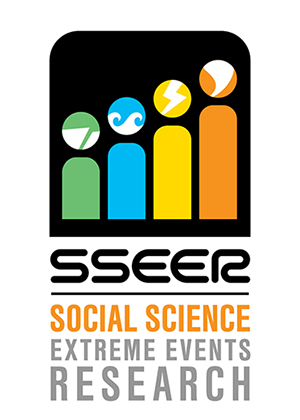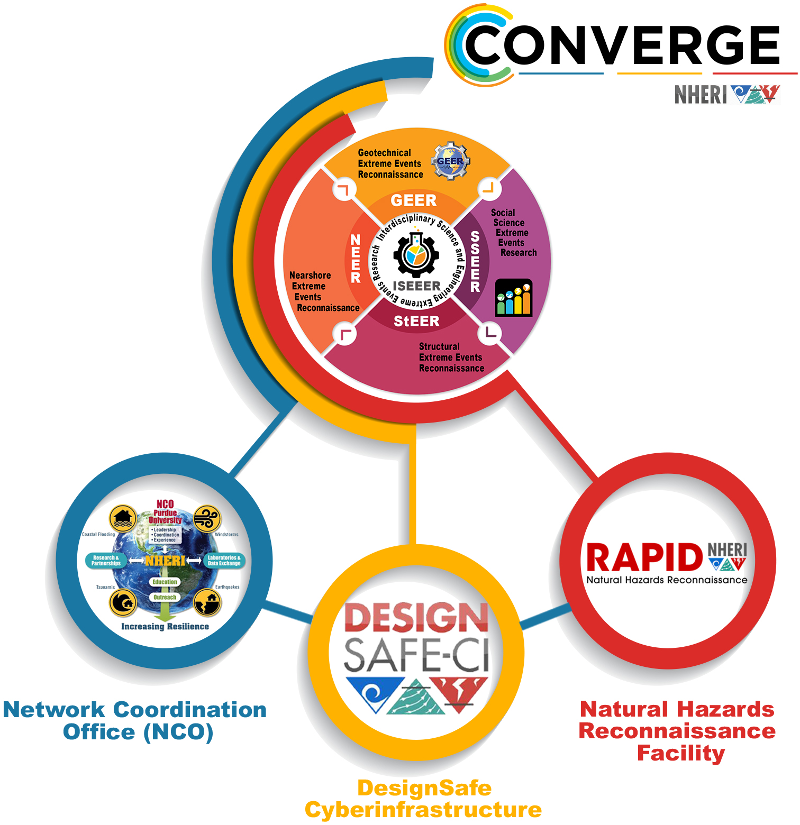
I am writing this post from Boulder, Colorado, looking out at summer skies filled with smoke from wildfires raging across the Western United States and Canada.
It is from this same high and extremely dry vantage point that I begin each day by reviewing the latest in disaster news. Just last week, Tropical Storm Lane dumped more than 40 inches of rain on parts of Hawaii, Venezuela was rocked by a 7.3 magnitude earthquake, devastating monsoon flooding in India killed 400 people and displaced a million more, and indigenous reindeer herders in Sweden pleaded for state aid to defray the impacts of extreme drought.
Disasters happen, on average, once each day around the world. And although disaster data are sometimes disputed, most experts agree that we have seen an increase in both the number of disasters and number of people affected by disaster in the past four decades.
More disasters, more damages, more displacement. These are three Ds that cause grave concern not only to disaster researchers, but to public officials, the private sector, and concerned citizens as well.
Yet even in the face of all these disasters, I do not despair. This is because I know that there is a vibrant and innovative multi-disciplinary hazards and disaster research and practice community out there. I firmly believe that this community holds the keys to a more sustainable future. This fills me with a sense of hope for what is possible in this world, especially as we join together to move findings into action.
Where do we begin?
An Invitation
I ask that all social scientists who research hazards and disasters join the Social Science Extreme Events Research network—SSEER.
SSEER is a National Science Foundation-supported network and online platform for social science hazards and disaster researchers. The mission of SSEER is to (1) identify and connect social science researchers to one another, to interdisciplinary teams, and to communities at risk to and affected by hazards and disasters; and to (2) amplify and advance social science hazards and disaster research.
Social and behavioral scientists from around the world who study hazards and disasters are invited to join SSEER, including: academic researchers, students, and applied and professional researchers in independent, government, industry, and not-for-profit sectors.
If you would like to join the SSEER network of social science hazards and disaster researchers, please sign-up here: hazards.colorado.edu/join-SSEER.
It only takes seven minutes to complete the form. Once we have received your information, we will be in touch regarding your entry in the database.
Background and Crucial Questions
SSEER is, in part, about answering some of the questions raised in the landmark 2006 National Research Council consensus study, Facing Hazards and Disasters: Understanding Human Dimensions. In that monograph, the Committee on Disaster Research in the Social Sciences dedicated an entire chapter to “The Present and Future Hazards and Disaster Research Workforce.”
Below, I quote at length some of the key insights and challenges raised by the committee, which have helped to inform and inspire the creation of SSEER.
“The size and composition of the hazards and disaster workforce will significantly determine the extent to which the social sciences, in general, can respond forcefully to twenty-first century demands for basic social science knowledge and its application” (317).
However:
“The committee does not have a precise accounting of the numbers of social scientists from respective disciplines currently engaged in hazards and disaster research. Neither government agencies nor professional associations systematically collect data on this research workforce…” (320, emphasis added).
Once an accounting of the workforce is available, and for the workforce to be sustained:
“…specific strategies must be devised (1) to put the next generation of researchers in the pipeline and (2) to recruit new researchers from the existing pool of social scientists” (320).
In an ideal world, the hazards and disaster research workforce:
“…will be of adequate size, reflect the diversity of the nation, and include researchers who have both basic and applied research interests and are capable of carrying out disciplinary, multidisciplinary, and interdisciplinary research. The natural, technological, and willful disasters that confront humankind in the foreseeable future require such a research workforce in the social sciences” (319).
A Census for the Community, Funding for Reconnaissance Research, and Other Objectives
SSEER represents a first attempt to generate a census, or an official count, of social scientists who study hazards and disasters. This will help us, as a community, to achieve the following objectives:
 The base layer of an SSEER map showing researcher location. Created by Mason Mathews, Jeffrey Gunderson, and Lori Peek. Source: Natural Hazards Center, 2018.
The base layer of an SSEER map showing researcher location. Created by Mason Mathews, Jeffrey Gunderson, and Lori Peek. Source: Natural Hazards Center, 2018.
• Create a novel, systematic database—representing the total number of active researchers and the range of disciplines, experiences, and types of expertise of those involved in the social science hazards and disaster research community
• Increase the visibility and positive impact of the social science hazards and disaster community by publicly articulating who we are, what we know, and how we can use our knowledge and skills to reduce hazards and disaster losses, especially among the most vulnerable people
• Share research scales and measures, data collection instruments and protocols, and data sets
• Democratize the research and engagement process by identifying all the members of the research community and, subsequently, extending the possibilities for interdisciplinary collaboration among a more diverse range of researchers
• Work together before disaster strikes, by identifying researchers by discipline and areas of expertise and by increasing the possibility for larger-scale, systematic data collection efforts
• Coordinate more effectively during and immediately following a disaster with locally-affected researchers, government response agencies, and teams launching new reconnaissance investigations
• Share the results of social science investigations after events to help reduce vulnerability, mitigate future losses, and promote social wellbeing
• Collaborate with researchers and practitioners to ensure that research is holistic, rigorous, and ethically-grounded
Building upon the Center's longstanding Quick Response Research Program, and with the funding support of the National Science Foundation, SSEER researchers will also have the opportunity to apply for funding to support research efforts to collect perishable data in the aftermath of disaster.

Coming Together and Moving Forward
SSEER is part of a much larger project that will support social science, engineering, and interdisciplinary hazards and disaster researchers through the newly-formed CONVERGE facility at the Natural Hazards Center.
In addition to building the network among the social science community, the Natural Hazards Center will be developing training modules, data and data collection instrument repositories, and other resources for the community. We will also be partnering with other National Science Foundation-supported extreme events research networks, including GEER and StEER. We will continue working with the Bill Anderson Fund and the National Science Foundation Minority SURGE Program to ensure that emerging scholars from historically underrepresented groups are engaged in future reconnaissance efforts.
We will be collaborating with other facilities through the Natural Hazards Engineering Research Infrastructure (NHERI), including working with DesignSafe to develop cyberinfrastructure for the social science and interdisciplinary research communities and the RAPID facility to ensure that social science and interdisciplinary reconnaissance teams have access to next generation data collection technologies.
Social scientists, will you please sign up today so that we can begin building this network together? Again, you can visit the SSEER page here: hazards.colorado.edu/join-SSEER
Thank you so much for your time and consideration and for the important work you do. Please take care of yourself and others.
Lori Peek, Director
Natural Hazards Center
This material is based upon work supported by the National Science Foundation (Award #1745611). Any opinions, findings, and conclusions or recommendations expressed in this material are those of the author and do not necessarily reflect the views of the National Science Foundation.